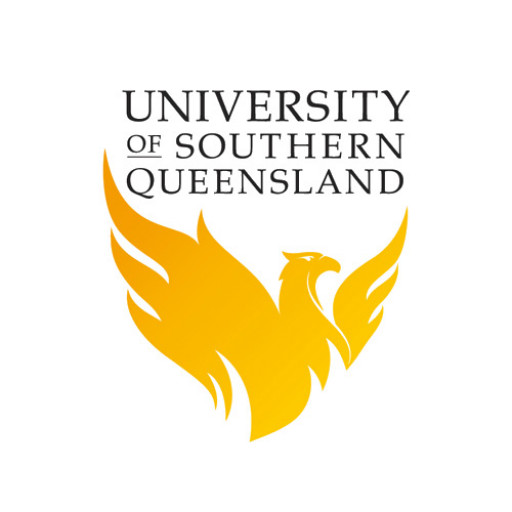Photos of university / #ouranu
The Bachelor of Digital Arts at the Australian National University is an innovative program designed to prepare students for dynamic careers in the rapidly evolving field of digital media and arts. This degree combines technical skills, creative exploration, and theoretical understanding to equip students with the ability to produce, analyze, and critically engage with digital artworks and technologies. Throughout the course, students will explore a wide range of topics including digital design, interactive media, virtual reality, animation, game design, and digital storytelling. The curriculum is structured to foster both practical expertise and conceptual knowledge, encouraging students to develop their own artistic voice while understanding the cultural and ethical implications of digital arts.
Students will have access to state-of-the-art facilities and collaborate on projects that reflect current industry practices. The program emphasizes interdisciplinary learning, allowing students to integrate concepts from computer science, visual arts, and media studies. Courses are taught by experienced professionals and scholars dedicated to nurturing creativity and innovation. In addition to coursework, students will participate in workshops, exhibitions, and internships that enhance their professional development and industry engagement. The degree aims to prepare graduates for diverse careers in digital media production, multimedia design, digital marketing, virtual environments, and more. Graduates of the Bachelor of Digital Arts will be well-positioned to contribute to the evolving digital landscape, combining artistic vision with technological proficiency to make meaningful contributions to contemporary culture and industry.
The Bachelor of Digital Arts at the Australian National University offers students an innovative and comprehensive education in the creative and technological dimensions of digital media. This program is designed to equip students with a diverse skill set encompassing visual arts, interactive media, animation, digital design, and emerging technologies. Throughout the course, students engage in multidisciplinary projects that encourage both creative expression and technical proficiency, preparing them for careers in digital arts, multimedia production, game design, virtual reality, and other emerging fields.
The curriculum integrates foundational courses in art, design principles, and digital tools with advanced topics such as 3D modeling, animation, coding for interactive media, digital storytelling, and user experience design. Students also explore the social, ethical, and cultural implications of digital media, fostering critical thinking alongside practical skills. Emphasis is placed on hands-on projects that develop portfolios, facilitating pathways into industry roles or further postgraduate study.
Students have access to cutting-edge facilities, including computer labs equipped with professional software, motion capture studios, and 3D printing workshops. Throughout the program, students collaborate with industry partners to gain real-world experience, participate in exhibitions, and showcase their work in university-run events. The Bachelor of Digital Arts provides a flexible pathway for students to combine technical expertise with artistic innovation, enabling them to contribute creatively to the digital economy and society.
Graduates of this program will possess a competitive portfolio and the skills necessary to succeed in various digital fields. They will be prepared to work in areas such as digital media production, animation studios, game development companies, interactive design agencies, and cultural institutions. With a focus on both practical skills and critical inquiry, the Bachelor of Digital Arts empowers students to be innovative creators and responsible digital citizens, ready to shape the visual and interactive landscapes of the future.
Program requirements for the Bachelor of Digital Arts at the Australian National University include a combination of core courses, elective units, and practical components designed to develop students' skills in digital media, visual arts, and interactive technologies. Students must complete a total of 144 units over the duration of the program. The core courses typically cover foundational topics such as digital imaging, creative coding, interactive media, visual storytelling, and digital design principles. In addition, students are encouraged to undertake hands-on projects and collaborate across disciplines to enhance their creative and technical abilities. Electives allow students to tailor their studies to specific interests within digital arts, such as game design, animation, virtual reality, or sound art. The program emphasizes both theoretical understanding and practical application, requiring students to participate in workshops, studio work, and industry placements where feasible. To graduate, students must also complete a capstone project that demonstrates their proficiency in digital arts through a comprehensive portfolio or exhibit. Entry into the program generally requires completion of secondary education with relevant qualifications, and students may need to submit a portfolio of their work as part of the admission process. Additionally, there are prerequisites in mathematics and computer literacy for certain courses within the degree. The program adheres to ANU’s standards for academic integrity and encourages participation in research and innovation in digital arts practice. Throughout their studies, students are supported by experienced faculty members who are active researchers and practitioners in their fields. The curriculum is regularly reviewed to incorporate emerging trends and technologies in digital arts to ensure graduates are well-prepared for careers in digital media industries, creative agencies, or continued higher education.
The Australian National University offers a range of financing options for students enrolled in the Digital Arts program, designed to support both domestic and international students throughout their studies. Domestic students may be eligible for government-supported funding, such as the Commonwealth Supported Place (CSP), which significantly reduces the tuition fees, or Australian Government loans like HECS-HELP, that allow students to defer their course payment until after graduation when they are earning above a certain income threshold. International students are required to pay full tuition fees, which vary depending on the specific courses within the Digital Arts program, and are advised to explore scholarships, grants, and bursaries offered by ANU and external organizations to offset costs.
ANU's funding options also include scholarships specifically targeted at students pursuing digital and creative arts degrees. These scholarships may be merit-based, need-based, or targeted at underrepresented groups, providing financial assistance ranging from partial fee waivers to full tuition coverage. Applicants are encouraged to review the university's official scholarship website and application deadlines to access these opportunities.
In addition to scholarships and government loans, students are advised to consider external funding sources such as industry-sponsored grants, private sponsorships, and crowdfunding initiatives to support their education in digital arts. Part-time work opportunities are available on campus and within Canberra, allowing students to earn income while managing their study commitments. The university also offers financial advice and planning services to help students budget effectively and explore various funding avenues.
For international students, additional considerations include exchange programs and external funding from home countries, which can sometimes be used to support study costs at ANU. Students are recommended to contact the university's international student office for personalized guidance on available financing options and to ensure compliance with visa requirements related to funding sources. Overall, while specific details on financing may vary depending on individual circumstances and student status, ANU provides a comprehensive framework of support mechanisms aimed at ensuring that financial barriers do not hinder students' pursuit of a degree in Digital Arts.
The Bachelor of Digital Arts at the Australian National University offers students a comprehensive education in the creative and technical aspects of digital media. This program is designed to equip students with a diverse set of skills that span across visual arts, digital design, interactive media, and multimedia production. Students will engage in hands-on projects that allow them to explore digital storytelling, animation, game design, and virtual reality. The curriculum emphasizes both theoretical understanding and practical application, fostering innovative thinking and problem-solving skills in digital environments. Students will have access to state-of-the-art facilities, including computer labs equipped with industry-standard software, motion capture studios, and digital production workshops. The program encourages interdisciplinary collaboration, enabling students to work with peers from fields such as computer science, media, and design. Graduates of the Bachelor of Digital Arts will be prepared for careers in digital content creation, multimedia design, visual effects, game development, and digital marketing. The university also offers opportunities for research and advanced study within the digital arts, including potential pathways to honours or postgraduate research programs. The program aspires to develop creative, technically proficient graduates who can contribute to the evolving digital landscape in artistic and commercial contexts.

